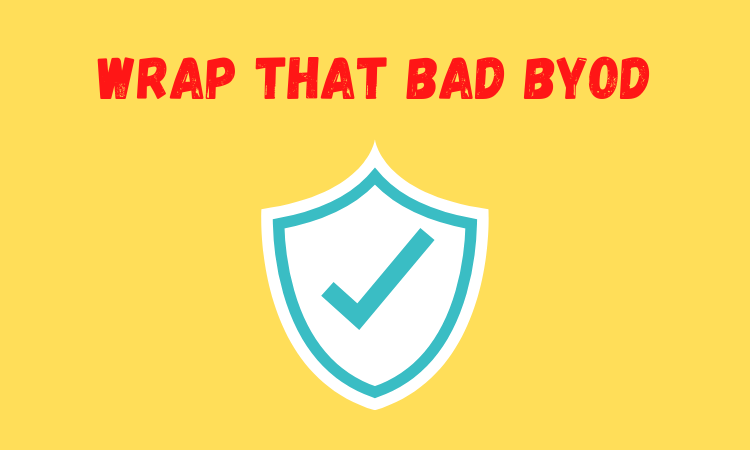
This is the continuation of our series on Bring Your Own Device (BYOD). To recap, here is a list of the previous posts in order:
- BRING YOUR OWN DEVICE (BYOD): FRIEND, FOE, OR BUSINESS F--KERY
- BYOD RIGHT HERE AND RIGHT FREAKING NOW!
- THE BYOD OPPORTUNITY: RETHINKING HOW TO GET S--T DONE
- BYOD ADOPTION - WHAT'S THE RUB?
- BENEFITS OF THE BIG BAD BYOD
- LEGAL & HR ISSUES WITH THE BIG BAD BYOD
Protection
There is no sure winning silver shiny object for securing your data or devices from theft, corruption, or loss other than keeping aware of the hazards and reducing them as best you can through good security practices. Anyone that tells you otherwise is selling snack oil and is an asshat.
One thing is certain: ignoring or severely underestimating your devices and data hazards is a risky strategy. For example, don't be tricked into thinking that since you're a tiny firm, a hacker won't be interested in taking down your mobile devices or data.
Cybercrime can affect businesses, organizations, and institutions of all sizes, shapes, and geographical locations. But that doesn't imply you're helpless.
Everyone can take the following basic steps:
Plan ahead: all your people should sign a BYOD policy, which explains their rights and obligations and allows you to erase and monitor the device, if necessary, remotely.
Be practical: Look for an excellent Mobile Device Management solution to assist you in managing the data and devices.
Be proportional: Allow employees to BYOD if they would benefit the most from it. If you don't need it to be company-wide, don't make it.
Build a secure network: To begin with, if your network is secure, hacking becomes far more difficult. Place restrictions on external access to your network and data: offer authorization on a need-to-know basis and only to relevant data at the right time.
Passwords: Change all default passwords regularly, use a unique password for each account, enforce complex password requirements, and for all that is holy, use two or three-factor authentication.
Encrypt data: Use cloud-based storage and backup services to store and backup your data.
Conclusion
That’s it for now, my next post will be on the fire and forget attitude often accompanying BYOD policies. Let me know what you think?
I only hit on few things in this post, so feel free to share some of the others you can think of here in the comments. Would love to hear from you.

GET IN EARLY!
The rewards earned on this comment will go directly to the person sharing the post on Twitter as long as they are registered with @poshtoken. Sign up at https://hiveposh.com.